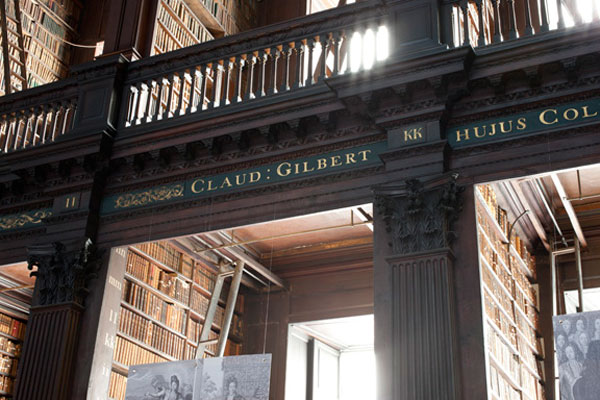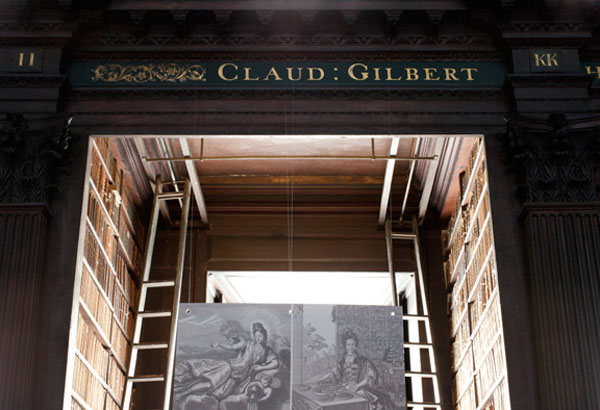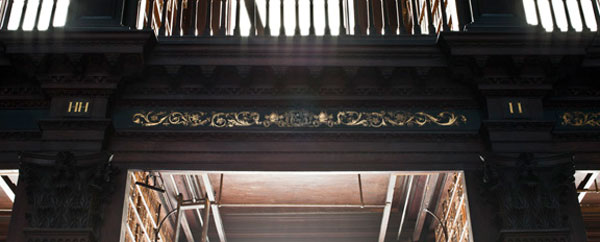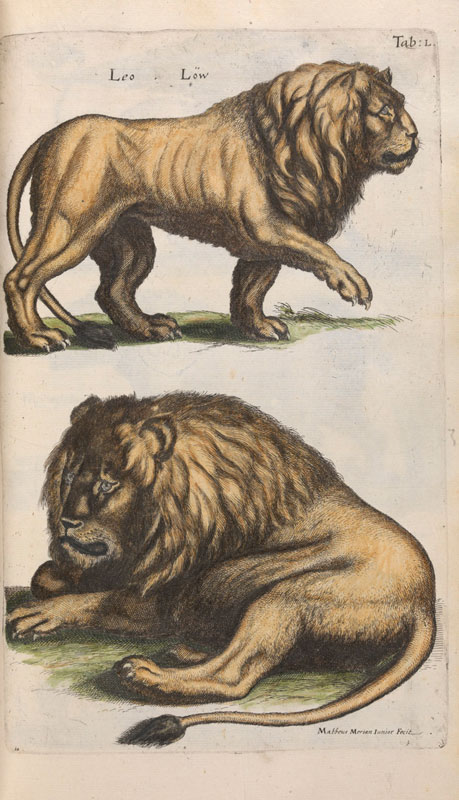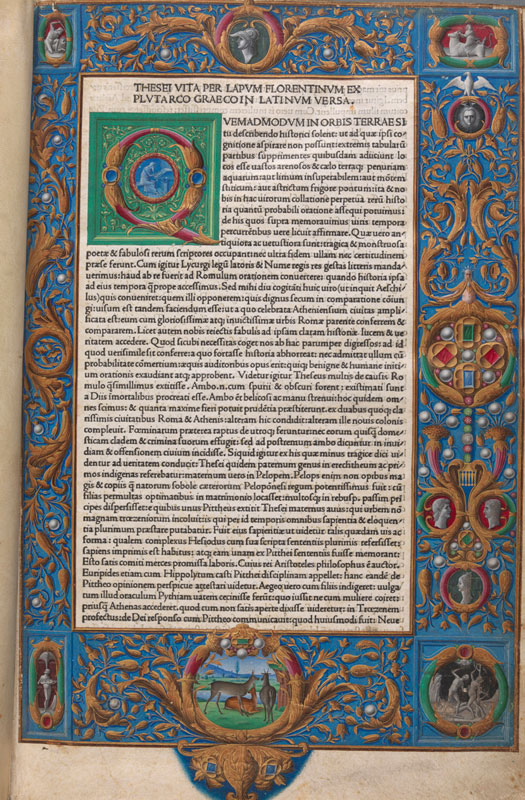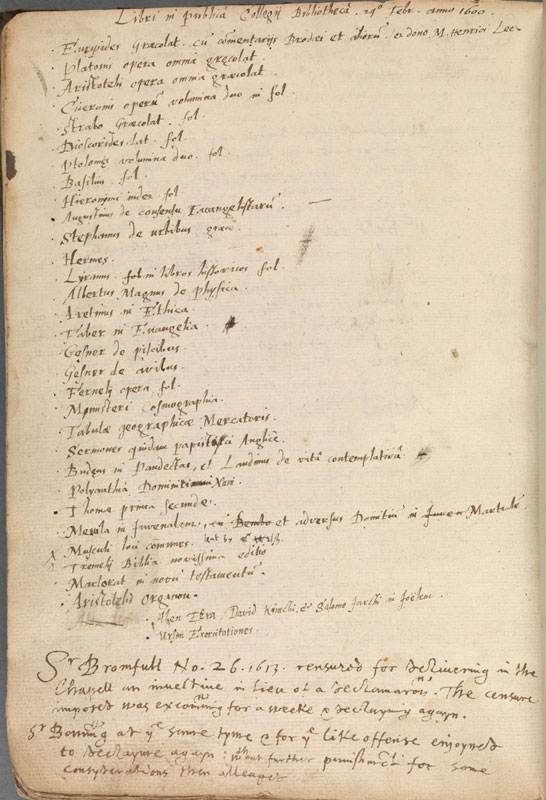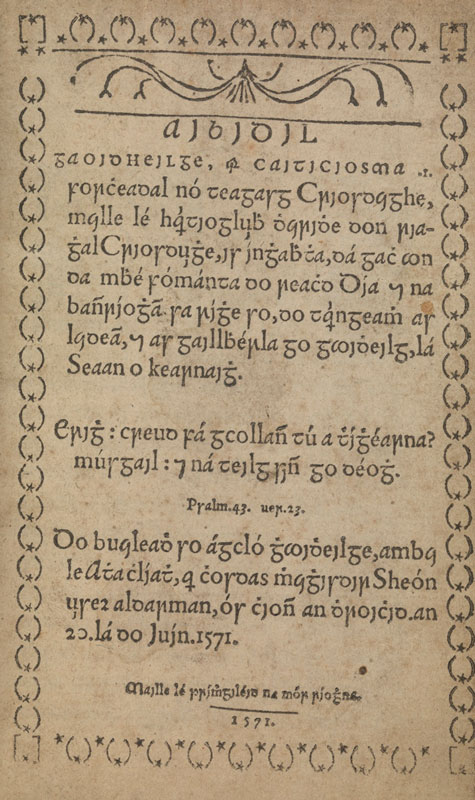Collections: Old and New
Early acquisitions: Ussher’s library and other collections
Archbishop James Ussher’s scholarly library – containing over 10,000 volumes, and gifted by King Charles II in 1661 – was one of the Library’s most important acquisitions. The College’s greatest treasures, the Book of Kells and the Book of Durrow, were presented by Ussher’s pupil, Henry Jones, vice‐chancellor of the University and bishop of Meath (1661‐82). Another important donation was the collection of books and manuscripts of Sir Jerome Alexander given on his death in 1670
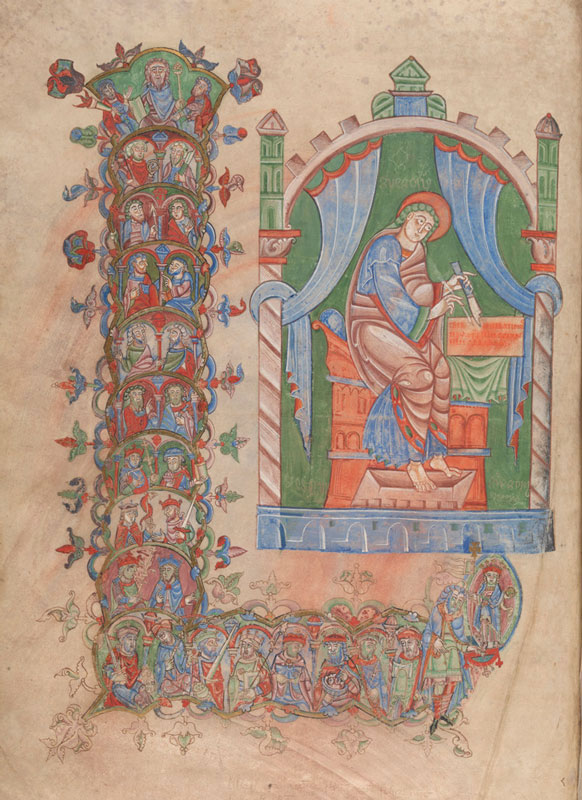 Winchcombe New Testament and Psalter
Winchcombe New Testament and Psalter
Gloucestershire, England, 12th century
This manuscript originated in the Benedictine abbey of Winchcombe and came to Trinity College Library in 1661 as part of
Archbishop James Ussher’s collection.
TCD MS 53 folio 7v
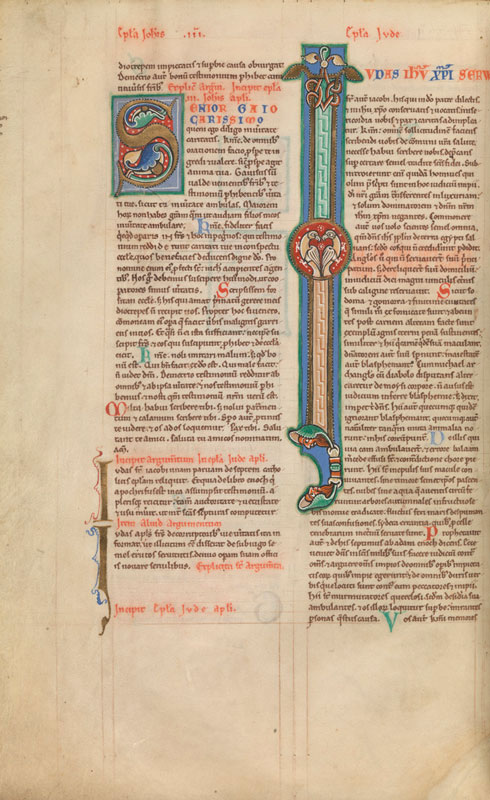 West Dereham Bible
West Dereham Bible
Norfolk, England, 12th century
This is the second volume of a two‐part Bible, possibly produced at the Abbey of St Albans, Hertfordshire, for presentation to the West Dereham
canonry, founded in 1189. It formed part of Archbishop James Ussher’s library.
TCD MS 51, folio 161v
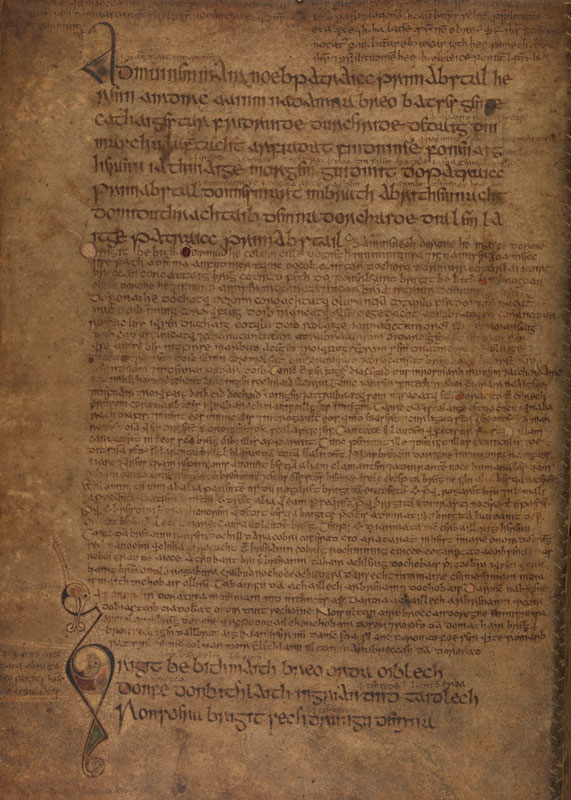 Liber Hymnorum
Liber Hymnorum
This ‘Book of Hymns’ is the earliest manuscript in the Library with a substantial amount of text written in Irish. It contains devotional hymns, in
both Latin and Irish, used in the services of the early Irish church. It came to Trinity College in 1661 from the library of Archbishop James Ussher.
TCD MS 1441, folio 16v
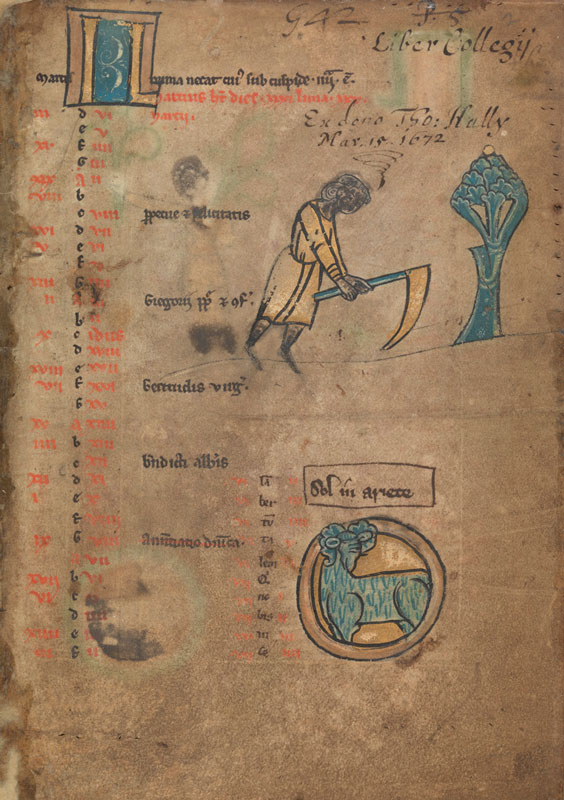 Psalter
Psalter
Liège, France, 13th century
This volume was donated to the Library by a 17th‐century alumnus Thomas Halley.
TCD MS 90, folio 2r
Donors and Benefactors
Some of the great benefactors are immortalised in the frieze that runs around the Long Room at gallery level: James Ussher, archbishop of Armagh, King Charles II, Dr William Palliser, archbishop of Cashel, who bequeathed over 4,000 books in 1726, and Dr Claudius Gilbert, vice-provost and professor of Divinity, whose library of 13,000 volumes was added in 1735.
Further valuable additions were to come; in 1741 the Stearne‐Madden bequest, which included the 1641 Depositions; Edward Lhuyd’s Irish-language manuscripts in 1786; the Hendrik Fagel library in 1802; and Henry George Quin’s collection, bequeathed in 1805. Quin (1760‐1805) was a wealthy young man from a cultured background who began his book‐purchasing career in his 20s. He took his own life at the age of 45 and bequeathed to Trinity College Library 110 books, a book‐case in which to keep them, and instructions that the bindings were never to be altered. His interests were fine editions of Greek and Latin classical authors and Italian Renaissance literature, but the unique element of Quin’s books lies in their exquisite bindings, sometimes commissioned by Quin himself.
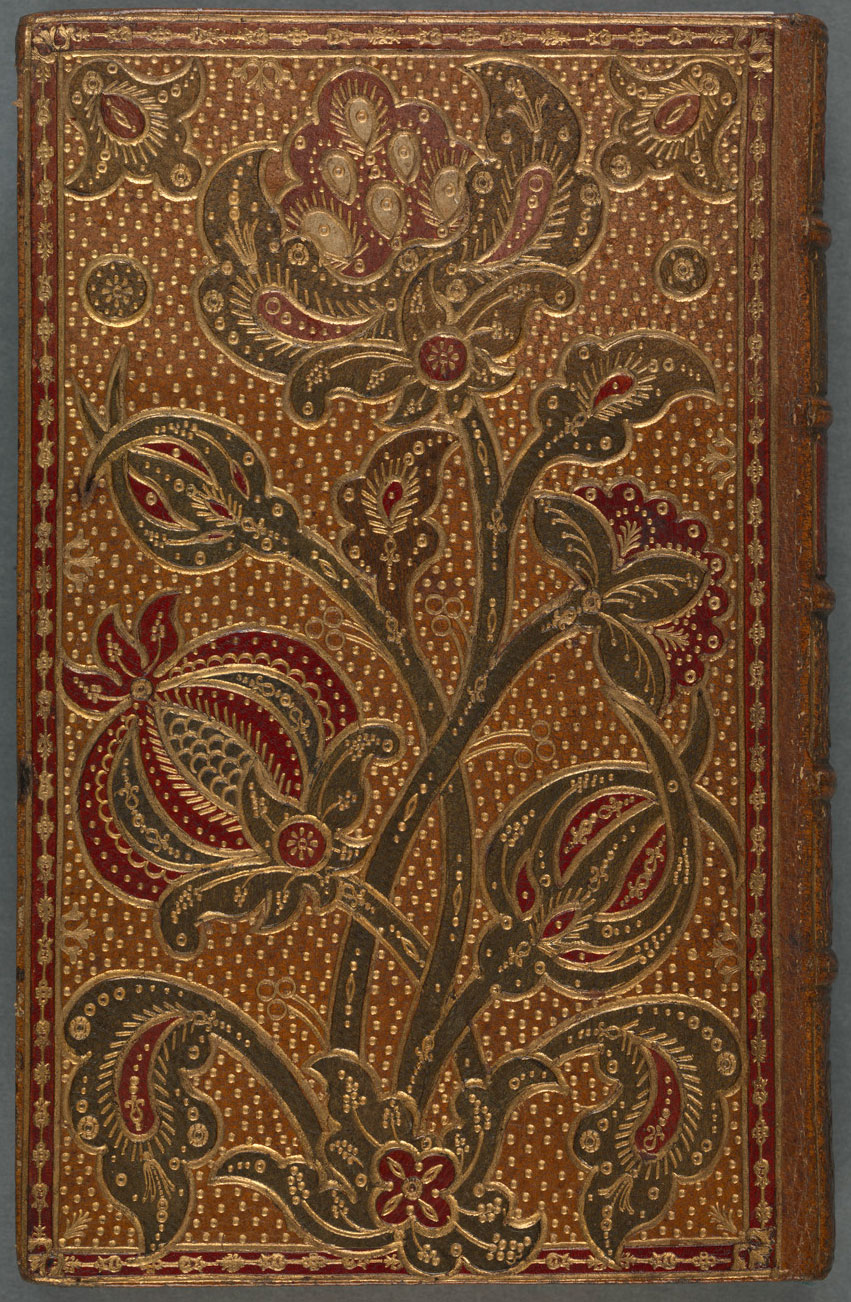
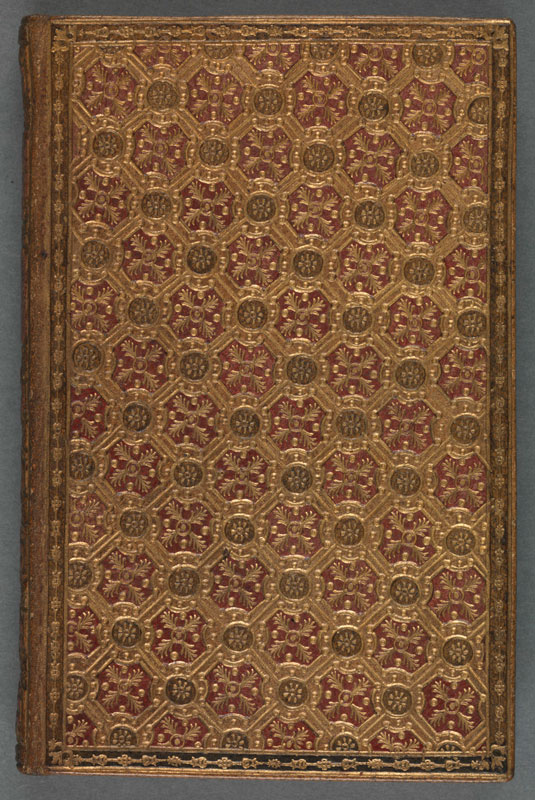 Giordano Bruno Spaccio de la bestia trionfante; La cena de la ceneri
Giordano Bruno Spaccio de la bestia trionfante; La cena de la ceneri
[1584]
The bindings on these two texts by the Italian philosopher and scientist Giordano Bruno are among the most decorative in the Quin Collection.
They are fine examples of 18th‐century French mosaic bindings, they are thought to have been the work of the French binder Derome.
Quin 92, 93
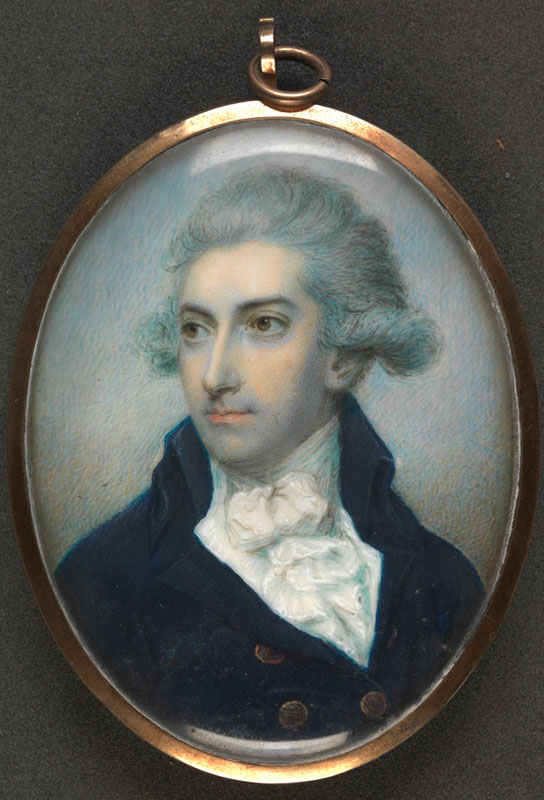 Miniature of Henry George Quin
Miniature of Henry George Quin
[1780s]
This miniature of Quin may have been commissioned by him when on his travels on the continent. A lock of his hair is to be found at the back of
the frame.
TCD MS 11031/14
The Fagel Collection
One of the most important collections in the Library is that of Hendrik Fagel, chief minister of the Netherlands at the time of Napoleon’s invasion. This collection of around 20,000 books and manuscripts was purchased for the College in 1802. The printed books in the collection are its major strength, but it also contains important maps and manuscripts. It mainly consists of continental works, including Dutch, French, German and Italian, as well as a number of works of individual importance for both their literary content and aesthetic merits. The collection was placed in a separate room at the east end of the Long Room, where a section of it still stands today behind a grille.
Early acquisitions: shelf marks and identification
The early collections of books and manuscripts can be identified by the shelf‐mark written in iron gall ink on the cut and coloured fore‐edge of each item. These shelfmarks consisted of four parts: first the letter H for Humanities or T for Theology, followed at the same level by two groups of numbers – the first is the class division, there being 10 for Humanities and 12 for Theology, and the second the shelf number; below this line is placed the individual item’s number on that shelf. Other marks of identification on volumes include MS ‘ex libris’, and awl‐ and chisel‐stabbed perforations in the pages and folios themselves
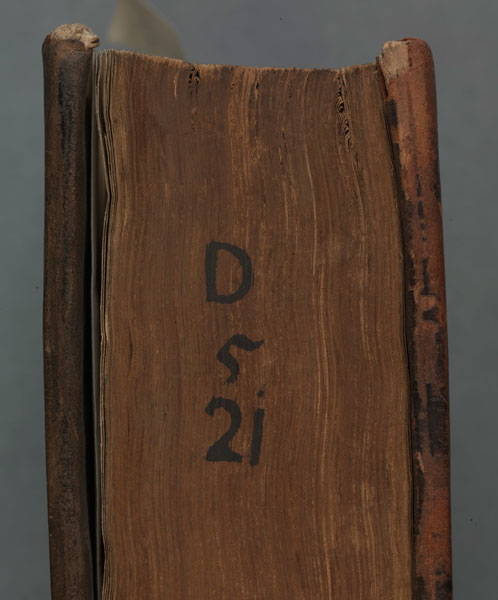 Pope Pius II Commentarii rerum memorabilium
Pope Pius II Commentarii rerum memorabilium
Rome, 1584
This volume was present in the early collection of the College
Library, as evidenced by the original Library shelfmark ‘D 5.21’
which was stamped on the fore‐edge.
DD.ee.16v
In the Long Room, on the ground floor and on the gallery, the books are shelved according to size. The book stacks on the north side were designated A to W, and AA to WW on the south side, and the volumes were given shelfmarks accordingly.
Copyright Act and storage
Under the Copyright Act of 1801 Trinity College was designated as one of two legal deposit libraries in the country (the other being the Kings Inns), which meant that it was entitled to a copy of all books published on the two islands. The first recorded consignment of books arrived in August 1802. At first the intake was small, but it soon increased to such a degree that, following another Copyright Act in 1814, College began to experience storage problems in the Long Room. The volume of books continued to increase steadily; by the early 1840s the building contained about 90,000 volumes.
Early Printed Books and Special Collections
Today the shelves of the Long Room and gallery hold around 200,000 volumes, which form part of the holdings of the Early Printed Books and Special Collections. The reading room of this department is located in the east pavilion of the Old Library, where researchers can consult a selection of works, including incunabula and other early printed books and pamphlets, private press items, limited editions, signed books, and Anglo‐Irish literature.

